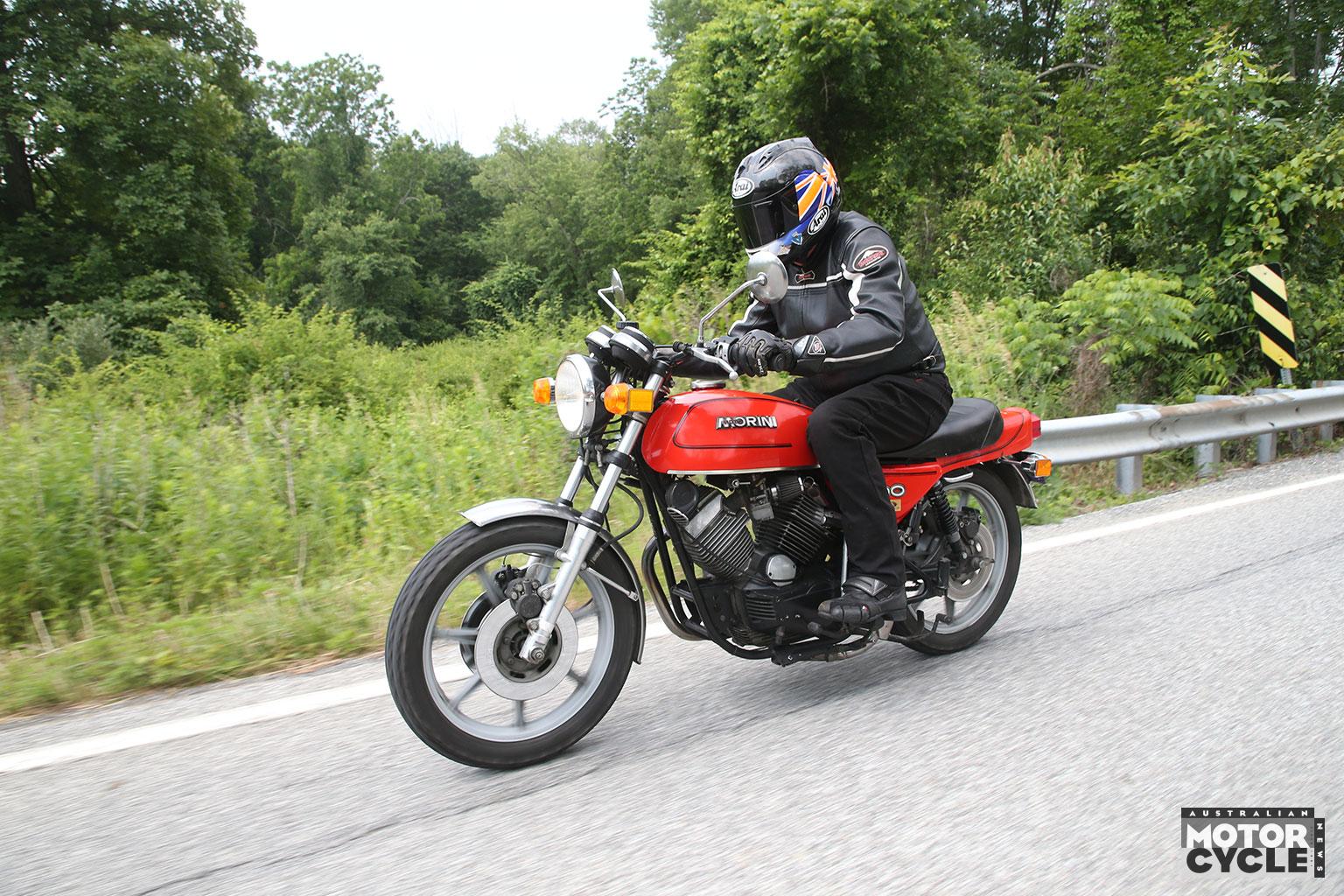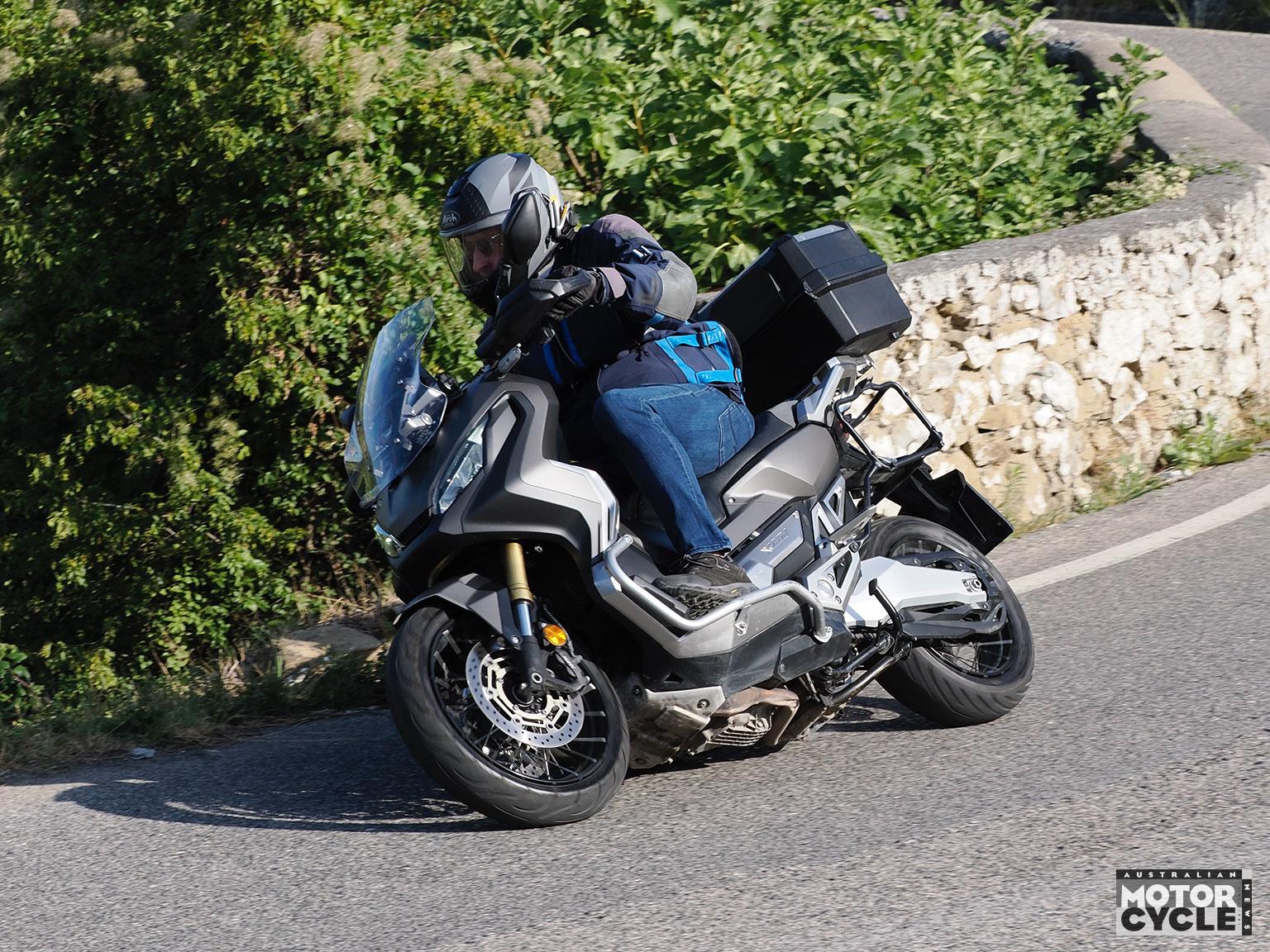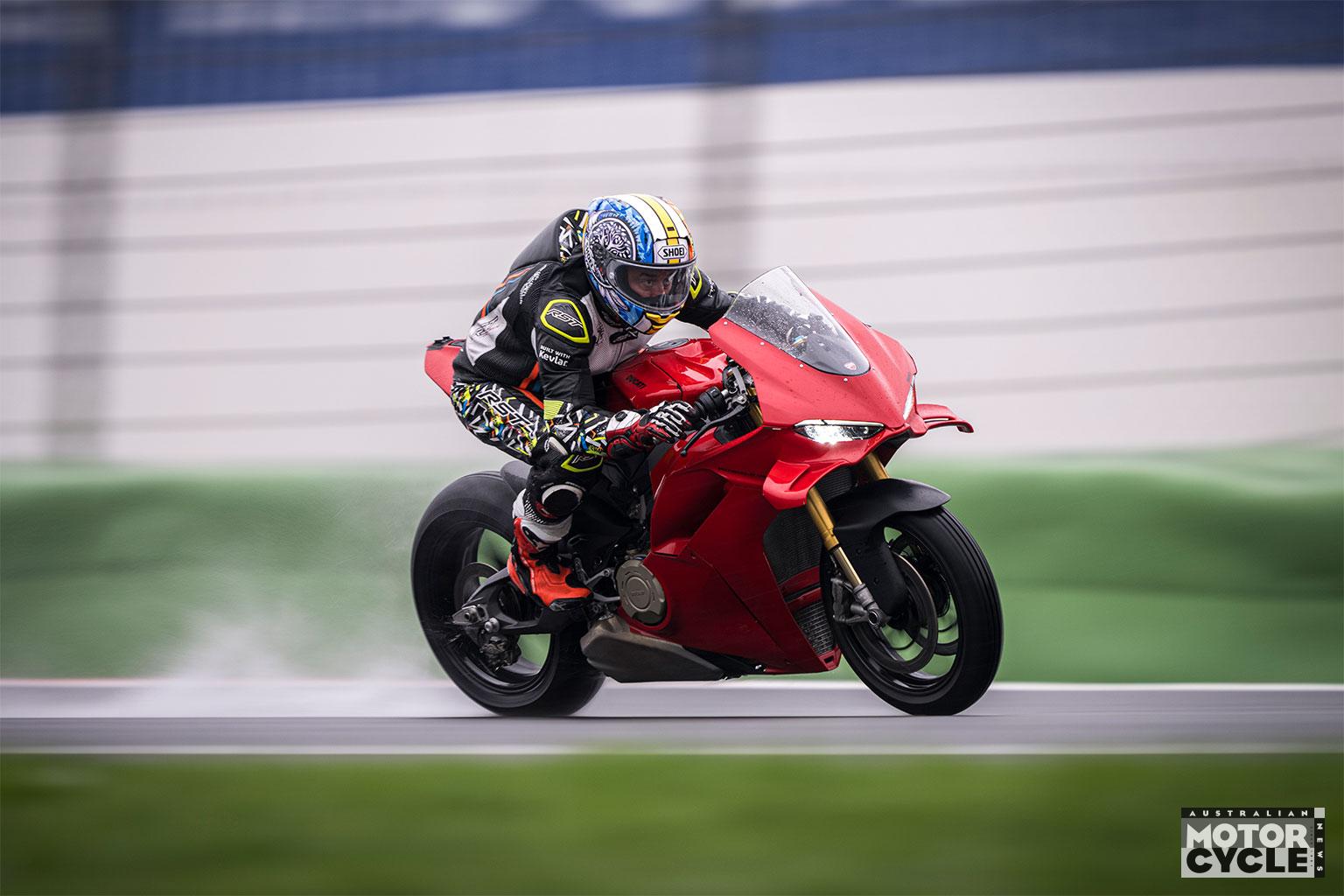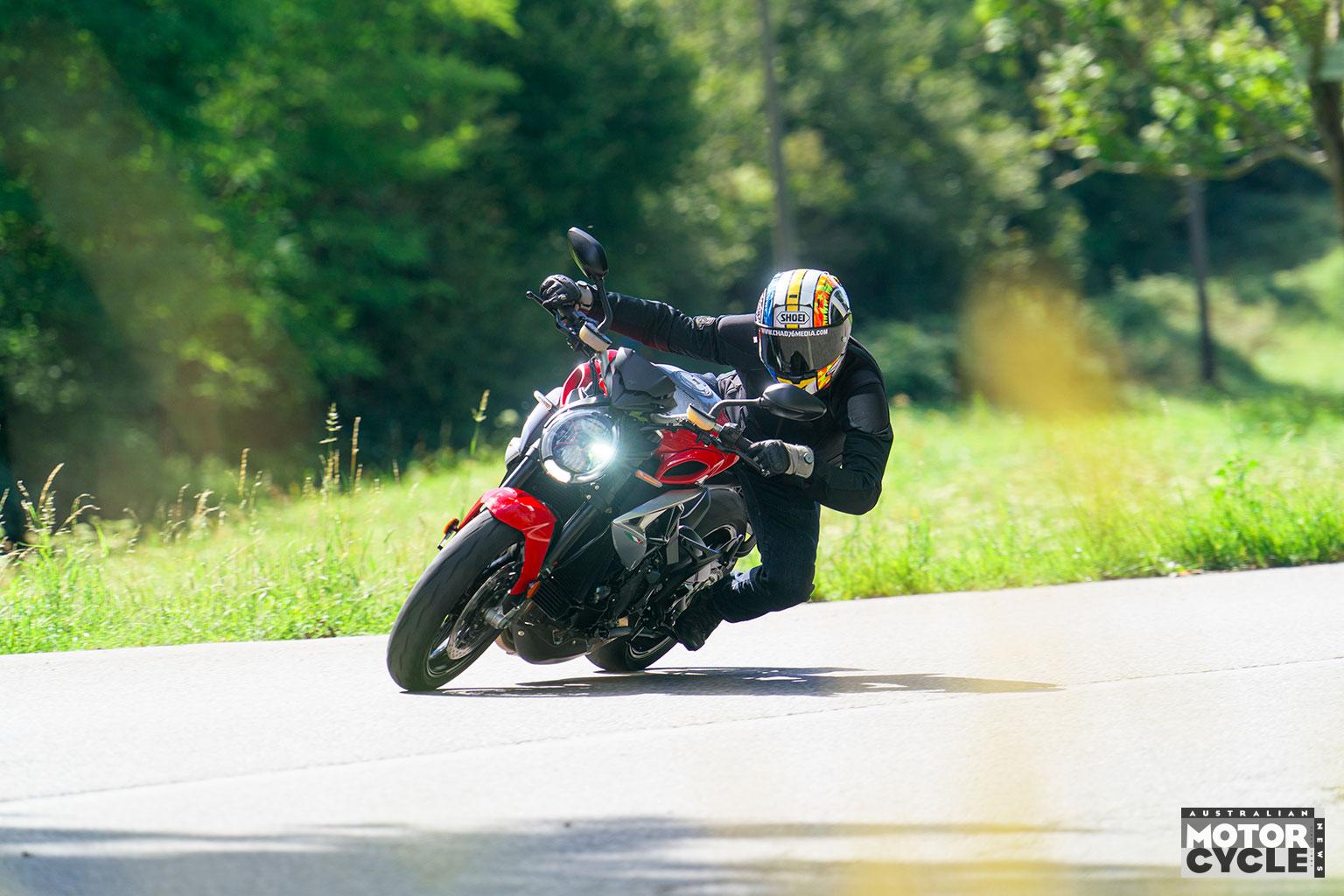Thanks to Suzuki and Yamaha, affordable sports-touring goes high-tech with the GSX-S1000GX & Tracer 9 GT+.
Remember when sports-tourers were more sports than tour? Bikes from the 90s like the Honda CBR1000F, the Kawasaki ZZR1100, the Suzuki RF900, the Triumph Sprint ST and the Yamaha YZF1000R? While as potent as any sportsbike of the era they managed to make some concessions to comfort in the form of less extreme riding positions, more relaxed chassis geometry, plusher suspension and room to throw a pillion and some luggage on the back.
But those concessions to comfort weren’t very generous and riders of these machines still found themselves crouched over clip-on ’bars and behind pretty small screens.
While there are still a few bikes around today that fit into this sportier end of the sports-tourer category (think Kawasaki Ninja ZX-14R, Suzuki GSX-S1000GT and Hayabusa), there are also newer generation sports-tourers that prove fast and comfortable are no longer exclusive. Models such as the BMW S 1000 XR, Ducati Multistrada V4 and KTM 1290 Super Duke GT give you access to 160hp-plus powerplants in packages with a comfortable and upright riding position more akin to an adventure bike. They also offer loads of tech, such as active suspension, radar and lean-angle sensitive rider aids, but you have to pay for the privilege with price tags well north of $30k.

Now there are two new high-tech players in the upright sports-tourer segment, and both with sub-$30k price tags. While the Yamaha Tracer 9 GT has been around for a few years, it was only this year joined by the new top-spec Tracer 9 GT+, which offers features to rival the European competition, such as active suspension, radar cruise control and radar linked-braking to name a few. It costs $27,599 ride away, with panniers.
Also introduced this year is the new Suzuki GSX-S1000GX, also offering plenty of tech in the form of semi-active suspension and Suzuki’s most advanced ride-mode system to date. It costs $25,890 ride away. While these two bikes are angling for the same slice of the market they go about it in very different ways. We grabbed them both for a couple of weeks to figure out which one does it best…
YAMAHA TRACER 9 GT+
Okay, I admit it. I wasn’t exactly frothing at the mouth when I picked up the Tracer 9 GT+ sports-tourer. I mean, I knew that its lower-spec sibling, the GT, was a good thing, but the excitement factor still wasn’t all that high. It was explained to me that the additional kit that makes the top-spec Tracer special includes (for the first time on a Yamaha) adaptive cruise control (ACC), a new seven-inch TFT display, redesigned height-adjustable seat and revised third-generation quickshifter, as well as something known as a radar-linked Unified Brake System (UBS). All stuff I’d experienced before on far more exotic machinery. Surely the Yamaha would be disappointing in comparison… but first up, let’s talk first impressions.
Styling-wise, the GT+ leaves me a bit cold. I know it’s subjective, but to my eye there’s something a little off about the flow of the panels and tank, although the very functional 30-litre panniers do fit the bike well and the overall look is purposeful rather than pretty. I just think it looks a bit dated compared to its competitors, particularly the Suzuki GSX-S1000GX.

Many will disagree about the styling but few will fault the 890cc DOHC, four-valve, three-cylinder CP3 engine that is at the heart of the Tracer range. Its power and torque figures of 87.5kW (117hp) at 10,000rpm and 93Nm at 7000rpm are hardly neck snapping, but the tractable triple delivers both power and torque in a linear manner throughout the rev range. It really is a delight to use in all conditions, producing a satisfyingly raspy engine note while it’s doing its thing. It’s also an economical unit, using 4.5L/100km during our test riding, which was predominately fast and in Sport mode.
Speaking of which, the new Tracer 9 GT+ has received changes to its engine character selection system (known as D-Mode). It is now fully integrated with the six-axis IMU and a collection of lean-sensitive rider aids, while previous Tracers had D-Mode operating separately to the electronic rider aids. The four modes of Sport, Street, Rain or Custom can all be changed on the fly and alter the relevant levels of traction control, slide control, lift control and the electronic suspension’s damping control.
In the real world, it feels as though the overly abrupt throttle found on many Yamahas (especially in the sportiest mode) has disappeared and the initial application of power is more controllable. It certainly makes for a more refined package when touring and during more spirited riding, with the added peace of mind that the rider aids are all working in harmony with the engine.
A new third-generation two-way quickshifter is mated to the CP3. It isn’t the smoothest I’ve used but it is by no means the worst. It now allows the rider to downshift while the throttle is open and to change gears without disengaging the ACC (within certain parameters).
And here we come to the real stars of the new GT+ show; Yamaha has installed radar technology for the first time, which enables fitment of ACC, as well as a radar-linked braking system.
The ACC uses a 200g Bosch radar system unit tucked away behind a protective cover under the headlights to maintain a preselected gap between the bike and other road users. It increases or decreases speed depending on the length of gap chosen; employing engine braking or even activating the brakes, if required. It also adjusts its response to a changing gap depending on the bike’s degree of lean angle, and tweaks the suspension settings to maintain stability, reducing pitch or squat when required. The integrated Passing Assist function smooths out acceleration when the rider indicates a lane change and the radar registers that the road is clear up ahead – and it really does work.
This is something that many other systems don’t do so well, so kudos to Yamaha. Indeed, the ACC on the GT+ compares well to other manufacturers’ systems, albeit without the lane-change warning lights or rear collision alerts found on more expensive machines… but that would require more expense with a rear radar unit.
The new UBS system employs both the radar and the six-axis IMU to help a Bosch hydraulic unit to optimise control and bias of the braking. Once you have worked out how to turn it on (because it is an opt-in system, as opposed to ABS, which is always active), it offers three separate functions. Firstly, it will intervene when the system detects that a collision is imminent. Secondly, braking forces are adjusted for more stable deceleration. Lastly, cornering brake control adjusts braking force to stop the tyres slipping out when the bike’s cranked over. In essence, it refines and adds to rider inputs in a variety of conditions to improve braking performance, rather than being a full collision-avoidance system.

The UBS is linked to the electronic suspension, so it also adjusts front and rear suspension damping to maintain chassis stability.
The new generation KADS (KYB Actimatic Damper System) is a front and rear suspension system governed by the IMU that automatically adjusts the damping forces. We tried the system in Sport and Comfort mode and found both to be excellent for each purpose. In fact, the exceptional ride is part of what makes the GT+ a really attractive proposition. It is, in short, a very comfortable motorcycle in all conditions.
The comfort theme continues with a height-adjustable rider’s seat that has been upgraded with new padding and a revised shape. I have to say it might just be the most comfortable motorcycle seat I’ve tried – wide, nicely padded and well positioned/angled. The pillion seat is also excellent, along with solid grab handles and nicely located and shaped panniers for passenger comfort. You can adjust the ’bar and footpeg positions, and there are 10-stage adjustable grip heaters and handguards. There’s also an easily activated (by hand lever) 10-level adjustable windscreen – and I do love a standard-fitment adjustable windscreen (and a centrestand, come to think about it) on a touring bike – it’s just common sense.
Also nice for a tourer is a new full LED headlight system with cornering lights that automatically illuminate the inside of the turn when the lean angle of the bike is more than seven degrees. It works very well, once you get used to it. The first time I rode the GT+ in the dark, I kept thinking someone was behind me flashing their lights as I tipped into corners. A bit unnerving until I realised my stupidity.
And while we’re talking lighting, the new high-luminosity TFT unit and switchgear are a definite improvement over the older dash and dreaded Yamaha wheel. The dash offers three layout options and is enabled for full-map integrated Garmin navigation and phone connectivity via Yamaha’s MyRide app. The new backlit switchgear is easier to use than on the previous model, although I did find myself selecting a variety of unwanted settings when my big winter-gloved thumb clipped the protruding joystick as I was going for the indicators. I happened to jump onto a new MT-09 soon after riding the GT+ and found its joystick to be perfectly sized and positioned; I would not be surprised if the new switchgear found on the MT-09 appears on future versions of the Tracer. SM





SECOND OPINION
While the Tracer 9’s 890cc inline triple is no match for the GX’s 999cc inline four, it’s still a willing and potent engine that is well suited to the sports-touring role thanks to a tractable bottom end, a strong midrange and decent top-end punch with claimed peak output of 87.5kW (117hp) at 10,000rpm. Oh, and it has such a tasty induction howl you’ll just want to rev it hard every chance you get.
As well as selectable ride modes, the Tracer 9 offers adjustable suspension modes, one firming up the damping for sporty riding and the other backing it off for comfortable touring; easy to do and effective. On bumpy roads the Tracer 9 doesn’t quite match the GX for compliance – it has less suspension travel – but when you want to press on it offers a lively chassis with predictable and reassuring handling.
As outlined elsewhere in this test, the Tracer 9’s suite of electronic traction aids and other tech features is comprehensive, it all works as it should, and is all clearly displayed on the full-colour TFT screen.
The standard centrestand is a nice touch on a sports-tourer as are the standard panniers, and you can adjust the screen height manually while on the move.
While you get more standard equipment on the Tracer 9 GT+, it does cost slightly more than the GSX-S1000GX, and it is not as powerful. For my money, I think I’d have to go for the Suzuki, but the Yammy is still an excellent high-tech sports-tourer. DM
SUZUKI GSX-S1000GX
The modern motorcyclist could be forgiven for feeling a tad confused about recent developments in market segmentation. No longer are we asked to choose between pure sport, touring and adventure bikes because so many do a bit of everything, and often do all these things very well. There are sportsbikes that are all-day comfortable, touring bikes that can tear up the track, and many adventure bikes that can – and do – both.
It stands to reason that new categories are being created by marketing departments to reflect this versatility. The new GSX-S1000GX is one such bike, which Suzuki calls a ‘Supreme Sport Crossover’. This is, we are told, a model with “superbike-level performance, confidence-inspiring controllability, optimised comfort, functionality, connectivity and attention to detail” combined with a “comfortable upright riding position, long front and rear wheel travel, increased ground clearance and new technologies that include Suzuki’s first electronic suspension”.

Fair enough, I guess, although I’m not so sure about the claim that the GX is “an exciting new expression of luxurious riding comfort and pleasure”. It is, however, a very fine machine designed for affordable versatility.
The GX is the third and most expensive model in Suzuki’s GSX-S family, joining the nakedbike and GT sports-tourer.
The GX justifies its additional cost by adding all-new bodywork, a larger screen and longer-travel Showa suspension (offering the aforementioned Suzuki-first electronic adjustment).
The first thing you notice when you jump on the GX is the more relaxed riding position compared to its siblings. It is certainly the most comfortable Suzuki I’ve ridden, with the possible exception of the V-Strom 1050. It’s meant to be an all-day tourer, so this makes sense.
What I find harder to understand are some small issues that detract from its top tourer credentials. These include a screen that requires the removal of bolts to raise or lower the height within a range of 43mm (there are three settings). Electric or manual handle adjustability would really be useful (like the screen on the V-Strom 1050 that is activated by an alloy lever, albeit from the front), if only to allow the rider some extra airflow in the city, then pop the ’shield up to send it all over the helmet on the freeway.

Also, while the rider seat cushion is 15mm thicker than on the GT and is quite adequate for your average-length ride, there are better, plusher ones fitted to several competitors (such as the Tracer GT+). I’d be forking out the extra bucks for the premium seat if I planned to do some serious miles (I’m getting old). Lastly, the cruise control activation is on the right-hand-side switchblock (tricky to activate when you are on the throttle), while the control buttons are on the left-hand side. I guess you’d get used to it, but it does seem slightly clumsy.
These, however, are small disappointments on an otherwise fine machine. I rode it in a variety of (usually wet) conditions and found it to be not only a mile-eater, but a smile-maker. When pushed, it is balanced and surefooted, with its twin-spar aluminium frame (and aluminium swingarm) and a front end that feels nicely planted. It also deals with the inevitably potholed Aussie tarmac with aplomb, thanks to electronic damping up front (with manual preload adjustment via adjusters at the bottom of the fork legs), and a rear shock that offers (on-the-fly) electronic adjustment of compression and rebound damping, as well as spring preload.
The Auto setting sets the rear preload according to rider/pillion/luggage weight, or you can choose one of the Single Rider, Single Rider + Gear, and Tandem settings. I found Auto to work more than adequately as I moved from city goat tracks to freeways to mountain twisties. It kept things firm enough to ensure precise handling, but not so firm that it made the ride uncomfortably harsh. The increase in suspension travel front and rear from 120mm on the other GSX-S models to 150mm on the GX is also a benefit on rough surfaces and definitely increases its versatility as a backroads tourer.
The GX is the first motorcycle in the GSX-S series to adopt the Suzuki Drive Mode Selector Alpha (SDMS-α) system originally found on the Hayabusa. Without getting into too much digital detail, SDMS-α manages a bunch of advanced electronic control systems, with power modes, traction control and active damping control the stars of the show. As with the original SDMS found on the other GSX-S models there are A (Active), B (Basic) and C (Comfort) modes. The first two deliver full power, and hard and medium suspension modes, respectively.

A is just a little peakier and firmer for sports riding. In C mode, you get softer suspension and throttle response, while traction control is dialled up. I found myself spending most of the time in B, easily activated via a 6.5-inch full-colour TFT LCD multi-function display that is bright and easy to read, and also offers full smartphone connectivity. Speaking of which, there’s a useful USB outlet built into the left side of the screen for charging your smart phone.
The GX uses the same engine as its GSX-S stablemates, a stonking 999cc inline four that produces a claimed 112kW (152hp) at 11,000rpm and 106Nm at 9250rpm. It’s a tried and tested free-revving unit that will make the GX hit freeway speeds and beyond before you know it, but which will chug happily around town thanks to plenty of low-end torque.
It really is a lovely engine that can deal with anything and not feel too lumpy or buzzy.
All models also share the same six-speed gearbox with two-way quickshifter. It all works smoothly together, the quickshifter at its best when the bike is being ridden hard, but it’s also quite willing to shift in both directions at low revs. Another nice touch is you can now change up or down using the quickshifter without cancelling cruise control, a new feature on the GSX-S range.
I was impressed by how smoothly the bike took off from standing starts and how easy it was to ride in heavy traffic. Further investigation revealed that Suzuki’s Low RPM Assist function is designed to monitor revs, gear and throttle positions, and clutch switch data as the rider releases the clutch lever to pull away from a standing start, or when riding at low speeds. The idea is to prevent engine speed dropping excessively as the rider launches the bike and to counteract drops in engine speed when riding in heavy traffic. I’m not sure how much this system helped but the GX is certainly extremely civilised around town.
The Brembo brakes up front have plenty of stopping power, especially when really called upon to reduce speed, combining with a system known as Suzuki Deceleration Damping Control (SDDC), which employs an inertial measurement unit to adjust suspension damping to minimise fork dive. My only issue with the brakes was that initial feel during light braking felt a bit wooden, but there’s absolutely no doubting their overall stopping prowess. SM





SECOND OPINION
There’s no doubt about it, the GSX-S1000GX is a fabulous sports-tourer. With 150hp at your disposal, it will hammer like a sportsbike when you want to go fast, and you can easily tweak the chassis settings and traction aids to suit the conditions and your mood.
Want to slow the pace a bit and take in the scenery? The GX is equally as good at touring thanks to its strong and flexible 999cc inline four and its clever electronics package which allows you to tailor throttle response, tweak the TC and ABS intervention and adjust the suspension settings, all easily and done on the fly.
Ride quality on rough roads is excellent, with plenty of suspension travel front and rear, and that aforementioned damping adjustability. You can also adjust the rear preload on the fly to suit the load on board… or just leave it in Auto and let the computer figure it out. A comfy, upright riding position means you can spend long days in the saddle without cramping up.
The GX is loaded with quality components, including its Showa suspension and Brembo brakes. As with other models in the GSX-S line-up, the front-end inspires plenty of confidence and the Dunlop Sportmax Roadsport 2 tyres work well in both wet and dry
riding conditions.
Considering all the adjustability built into the GX, it’s surprising you have to pull out the tool kit to move the screen up and down, and if you want luggage you’ll have to pay extra for it. Oh, and a centrestand would be nice. DM

VERDICT
At first glance, the ride-away price of $25,890 makes the Suzuki look like the better value option over the Yamaha ($27,599 ride away), but that’s only if you are happy to deal with fewer creature comforts. To bring the GX up closer to GT+ spec, you’ll need to add the centrestand ($726), side case set ($1984.70), premium seat ($536.90) and heated grip set ($767.50), which takes it to just under $30k, even before adding the cost of fitting the accessories (and remember that the cruise control is not as advanced as the Yamaha’s).
The Suzuki is also thirstier, so will be a bit more expensive to run than the Yamaha. However, its inline four produces considerably more power and torque than the Yamaha’s triple, and the Suzuki is arguably more comfortable on rough roads.
These are two bikes you should definitely test-ride one after the other to decide for yourself. In the end, I guess the choice will be in which one you enjoy riding more. For me, the Yamaha ticks just a few more boxes and gives you a more refined and versatile machine, perfect for the one-bike garage. But it’s definitely a close call, and I have no doubt that many riders will find the Suzuki’s raw power and (arguably) better looks more to their liking. SM
SPECIFICATIONS
SUZUKI GSX-S1000GX

ENGINE
Capacity 999cc
Type Inline four cylinder, DOHC, four valves per cylinder
Bore & stroke 73.4 x 59mm
Compression ratio 12.2:
Cooling Liquid
Fueling EFI
Transmission Six-speed
Clutch Wet, multi-plate, slipper
Final drive Chain
PERFORMANCE
Power 112kW (150hp) @ 11,000rpm (claimed)
Torque 106Nm @ 9250rpm (claimed)
Top speed 275km/h (est)
Fuel consumption 5.6L/100km (measured)
ELECTRONICS
Type Bosch
Rider aids Cornering ABS, cornering traction control, wheelie control, roll torque control, semi-active suspension, cruise control, two-way quickshifter
Rider modes Active, Basic and Comfort
CHASSIS
Frame material Aluminium
Frame type Twin-spar
Rake 25.5°
Trail 97mm
Wheelbase 1470mm
SUSPENSION
Type Showa
Front: 43mm USD SFF-CA fork, electronically adjustable compression and rebound damping, manual preload adjustment, 150mm travel
Rear: Monoshock, electronically adjustable compression, rebound and preload, 150mm travel
WHEELS & BRAKES
Wheels Cast alloy
Front: 17 x 3.5 Rear: 17 x 6.0
Tyres Dunlop Sportsmax Roadsport 2
Front: 120/70ZR17 Rear: 190/55ZR17
Brakes Brembo/Nissin
Front: Twin 310mm discs, four-piston calipers
Rear: Single 220mm disc, twin-piston caliper
DIMENSIONS
Weight 232kg (kerb, claimed)
Seat height 810mm
Width 925mm
Height 1350mm
Length 2150mm
Ground clearance 155mm
Fuel capacity 19L
SERVICING & WARRANTY
Servicing First: 1000km
Minor: 12,000km
Major: 24,000km
Warranty Three years,
unlimited km
BUSINESS END
Price $25,890 (ride away)
Colour options Metallic Triton Blue or Glass Sparkle Black
CONTACT
suzukimotorcycles.com.au
YAMAHA TRACER 9 GT+

ENGINE
Capacity 890cc
Type Inline triple, DOHC, four valves per cylinder
Bore & stroke 78mm x 62.1mm
Compression ratio 11.5:1
Cooling Liquid
Fueling EFI
Transmission Six-speed
Clutch Wet, multi-plate, slipper
Final drive Chain
PERFORMANCE
Power 87.5kW (117hp) @ 10,000rpm (claimed)
Torque 93Nm @ 7000rpm (claimed)
Top speed 230km/h (claimed)
Fuel consumption 4.5L/100km (measured)
ELECTRONICS
Type Yamaha
Rider aids Cornering traction control, slide control, wheelie control, cornering lights, adaptive cruise control, semi-active suspension, cornering brake control, radar-linked braking, quickshifter
Rider modes 1, 2, 3 and 4
CHASSIS
Frame material Die-cast alloy
Frame type Diamond
Rake 25°
Trail 108mm
Wheelbase 1500mm
SUSPENSION
Type KYB
Front: 41mm USD fork, electronically adjustable compression and rebound damping, manual preload adjustment, 130mm travel
Rear: Monoshock, electronically adjustable compression and rebound damping, manual preload, 137mm travel
WHEELS & BRAKES
Wheels Forged alloy
Front: 17 x 3.5 Rear: 17 x 5.5
Tyres Bridgestone Battlax T32
Front: 120/70ZR17 Rear: 180/55ZR17
Brakes Advics/Nissin
Front: Twin 298mm discs, four-piston calipers
Rear: Single 245mm disc, twin-piston caliper
DIMENSIONS
Weight 223kg (wet, claimed)
Seat height 810-825mm
Width 885mm
Height 1430-1470mm
Length 2175mm
Ground clearance 135mm
Fuel capacity 18.7L
SERVICING & WARRANTY
Servicing First: 1000km
Minor: 10,000km
Major: 40,000km
Warranty Two years,
unlimited kilometres
BUSINESS END
Price $27,599 (ride away)
Colour options Icon Perfromance
CONTACT
yamaha-motor.com.au











